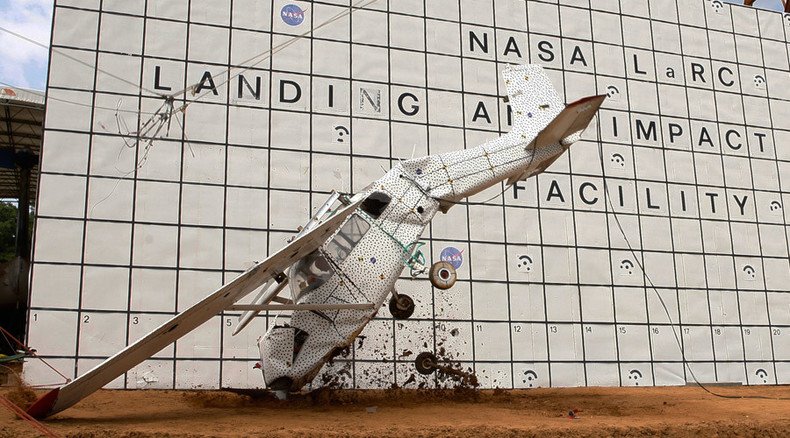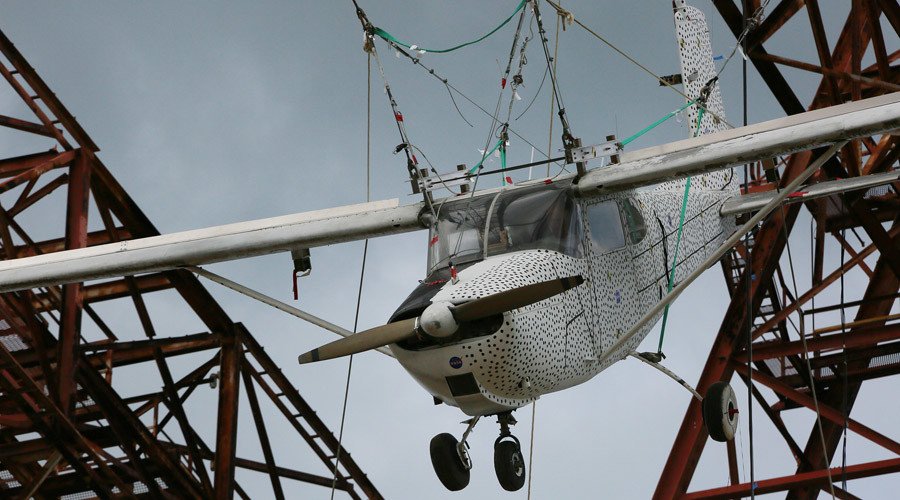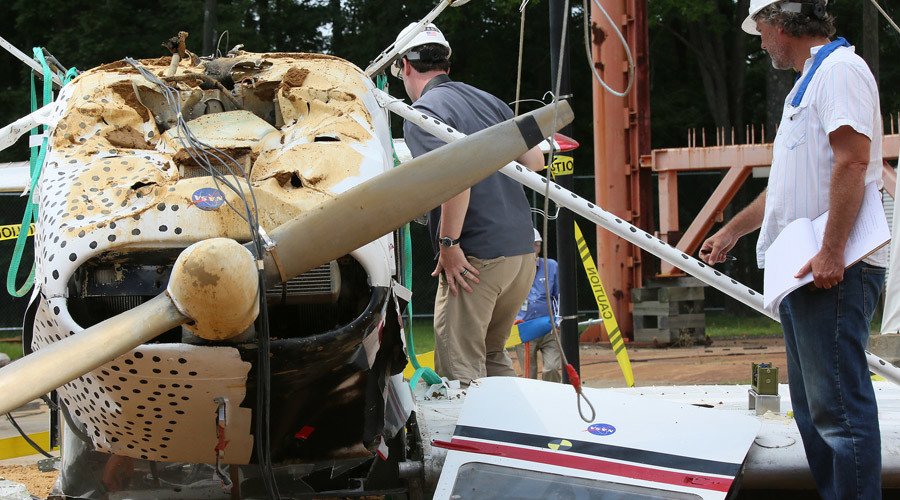NASA crash tests plane to improve emergency beacon that failed on MH-370 (VIDEO)

US engineers dropped a Cessna 172 airplane from a tall crane to test its emergency beacons, which are meant to activate within 50 seconds of a crash, but frequently fail.
“Too often they fail to work as expected, in part, because of inadequate performance specifications in several areas including vibration, fire survivability, automatic activation, crash safety and system installation,” Chad Stimson, NASA Langley Emergency Locator Transmitter Survivability and Reliability (ELTSAR) project manager, following the first such test in a series of three earlier this month.
The US aeronautics agency, which has a search and rescue mission in addition to its more famed space program, is conducting the experiments to develop a fundamentally new beacon design.
While the first crash test plunged a vintage 1958 4-seater plane into concrete, the second released a plane of the same design from a greater height above a muddy patch, which NASA said mirrored realistic crash conditions more closely.

“It’s actually worse,” said Stimson, comparing the second test to the earlier one. While planes tend to skid on concrete before coming to a stop relatively intact, they often dig into mud “so all that force is absorbed by the airframe and the occupants.”

“No one would have walked away from this. They might be alive, but they’d need help right away. In that sense, it’s the perfect search and rescue case.”
The easiest way to call for such help would be through the Emergency Locator Transmitter (ELT) which traditionally consists of two parts. The first is an internal signal box, which is activated by impact or changes in water pressure. If this happens, it prompts the second part, essentially a transmitter with an antenna, to beam a signal up to a satellite, which relays it to a search and rescue station in less than a minute. The system can also be activated manually if the plane’s crew anticipates trouble.

The test Cessna was equipped with five ELTs fixed in various locations within the fuselage, as well as 40 cameras and 64 data recording points, to accurately map which parts of the plane would be most vulnerable during a crash landing.
“This will provide very good data collection for us,” said Lisa Mazzuca, NASA’s Search and Rescue mission manager, who was present at the test site in Langley, Virginia. “This is exactly what we wanted. The nose hit the ground first.”
Despite being compulsory in the US since 1973, ELTs still have displayed a spectacular 75 percent failure rate, even after several modifications. Among the most common causes are the antenna detaching or becoming blocked, and the box sinking in water before it can send out a ping.
Many have speculated that MH 370’s ELT failed to send out a signal when the plane disappeared from radar screens on March 8 last year, somewhere near Indonesia, because it had crashed into water. If the ELT had worked, authorities could have avoided the 18-month search that has cost over $100 million dollars so far, and which may only now be coming to an end.












